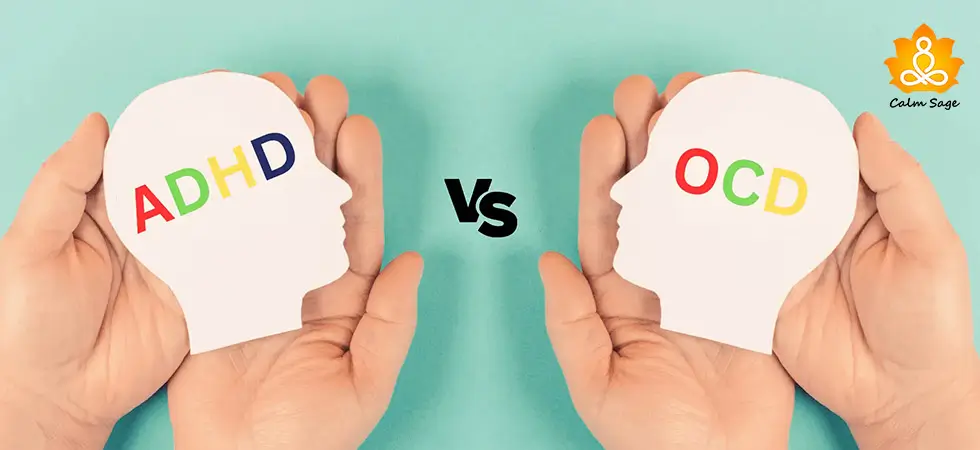It’s Time We Address Adult Temper Tantrums (Types, Causes, And How To React)

When we hear the word, “tantrum”, the first image that pops up in our minds is that of a toddler, bawling its eyes out, and demanding attention. Often tantrums in adults are referred to as emotional meltdowns but these tantrums can be as harmful as any other emotional outbursts.
Children throw temper tantrums because they are not completely aware of their emotions and emotional needs. But in an adult, these temper tantrums can be out of something else entirely.
Often born out of rage and frustrations, these adult temper tantrums occur when you can no longer acknowledge or cope with strong (or painful) emotions. Here, in this blog, let’s take a look at some of the causes of adult temper tantrums, how temper tantrums in adults look like, and how to react when adults are throwing tantrums.
Temper Tantrums In Adults
While childhood temper tantrums are a normal occurrence, in adults, they can be quite concerning. Children, mainly toddlers, often struggle with understanding their emotions and needs, and to them, what better way to vocally express their needs than throwing tantrums?
But as we grow up, we learn to vocalize our needs and feelings. However, there are times when we can’t understand our feelings either. Especially when it comes to expressing frustration and anger.
When an emotional outburst is born out of anger and irritation, it can be described as a temper tantrum. In some cases, temper tantrums in adults can be associated with personality disorders.
Types Of Temper Tantrums In Adults
While in children, temper tantrums are quite common and clear, in adults, they can look a little different and subtle. Here are types of adult temper tantrums you need to be aware of:
1. The Silent Fit
In some cases, an adult can throw a tantrum in silence without verbally expressing their frustrations. Examples can be stomping their feet, blocking someone’s path, or pacing.
2. The Ranting Spree
In other cases, an adult may go on a ranting spree that can include yelling, insulting, and shouting. Other ways this type of adult temper tantrum may look like can include slamming doors.
3. The Whiner
When adults are throwing tantrums, they may express their frustrations by crying, moaning, or even whining. Examples can include huffing and puffing in anger, screaming, or even cursing.
What Are Adult Temper Tantrums?
Adults who throw tantrums can do so because of many reasons. Some people may even have an emotional meltdown because of sensory overload. Such a response can be mistaken for a temper tantrum.
In other cases, adult temper tantrums are a type of manipulation tactic that someone may use to get their way and what they want while in others, someone may struggle with expressing or managing their emotions, making them feel overwhelmed, causing an outburst. However, sometimes, temper tantrums in adults are not because of emotions, at all.
Did you know that an adult temper tantrum can also be a sign of an underlying mental health disorder? According to statistics, at least 20-60% of people with tics or Tourette’s syndrome struggle with frequent emotional meltdowns.
What Are The Causes Of Adult Temper Tantrums?
Managing strong emotions can be difficult for anyone, let alone children, especially when these emotions range somewhere along the lines of agitation, grief, frustration, and shame. Adults, when too stressed, can also struggle with controlling their emotions.
In the last two years, since the COVID-19 pandemic, feelings of anger, frustration, and grief have only intensified, causing more and more emotional outbursts in adults and temper tantrums.
While sometimes, temper tantrums in adults may not have a reason, sometimes, the trigger of the tantrum may be understandable such as facing injustice, discrimination, or oppression.
Even hormonal changes like menopause and pre-menstrual changes can also cause strong emotions that one may not be able to control well.
Please keep in mind that if your temper tantrum is hurting others or is threatening others then it’s not OK.
While not all emotional outbursts or temper tantrums in adults can be linked to mental health disorders, they may play a role. Sometimes, adult temper tantrums can be an underlying symptom of:
- Intermittent explosive disorder (IED)
- Borderline personality disorder (BPD)
- Bipolar disorder
- Obsessive-compulsive disorder (OCD)
- Narcissistic personality disorder
- Post-traumatic stress disorder (PTSD)
- Depression
- Anxiety disorders
- Substance use disorder
If you or your loved one are struggling with frequent emotional meltdowns, outbursts, or temper tantrums, then it is recommended that you speak to a mental health professional.
How To React To Adult Temper Tantrums?
If your loved one is frequently throwing tantrums, then here are steps to help you:
1. Do Some Evaluation: Is this person more likely to moan, whine and cry, or are they more likely to respond with violence. Evaluate the situation first. This will help you form an appropriate response plan.
2. Avoid Engaging With Them: Defending yourself is a good choice but not when the other person is not willing to listen to your reasons. In such cases, engaging with them is not a good idea either. If you feel that engaging with them is doing more harm than good, walk away.
3. Stay Calm And Even: If you decide to engage and reason with them, then make sure you keep your tone even and yourself calm. Adult temper tantrums are more likely to anger you and responding with more anger will not help. So keep yourself calm and tone even.
4. Don’t Take It Personally: Not always the reason for an adult temper tantrum is personal. While your loved one may speak rudely and hurt your feelings, remember that it’s not personal (at least not always). If you find yourself in a violent situation, please remove yourself from the situation, immediately. Your safety is a priority.
5. Contact For Help: There might be times when an adult temper tantrum may go out of hand and may require professional intervention. If you find yourself in a violent situation where your safety might be compromised, contact your nearest helpline. If you’re in a store and are faced with adults throwing tantrums, contact the store personnel immediately.
6. Give Yourself Time To Process: Temper tantrums can leave you feeling exhausted and upset even if someone else threw the tantrum. After the situation is dealt with, take some time to process your emotions and feelings.
If your loved one is struggling with frequent meltdowns and temper tantrums, then you can consult a professional for assistance. You can also gently ask your loved one about the cause of their outburst.
While dealing with adult temper tantrums, remember that it’s OK to set boundaries to protect your mental and emotional health. If your loved one’s adult temper tantrums are making you feel unsafe, walk away or consult an authority figure.
Your safety and health also matter along with your loved one. Adult temper tantrums cannot be taken lightly and it’s time we address temper tantrums in adults.
I hope this blog helped you understand what adult temper tantrums are, the causes, how they look like, and how to react to them. For more, you can connect with us on our social media or drop us an email at info@calmsage.com for more information.
Share this article with your friends and family and don’t forget to share your thoughts in the comments below. If you liked this article, give us a thumbs up.
Take care and stay safe!




















